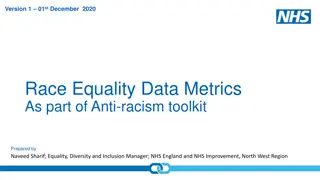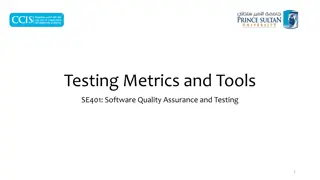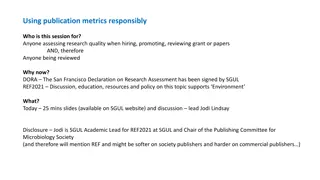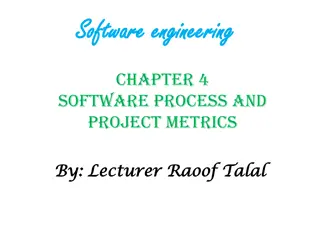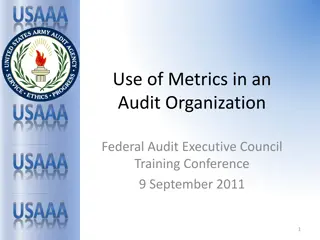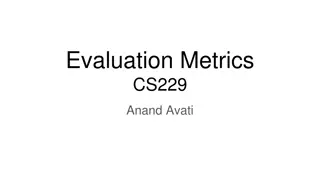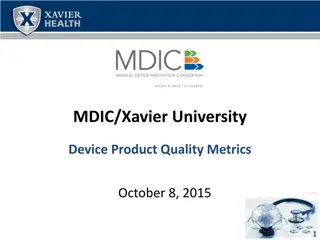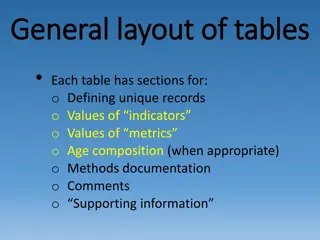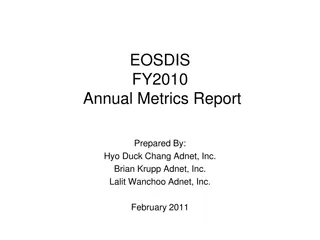Jenkins Infrastructure Overview and Key Metrics
Jenkins infrastructure supports over 13,000 jobs with 8,000+ builds per day. The system consists of a primary Jenkins master, backup masters, and numerous slaves across data centers. Key metrics include an average build success rate of 80% and 6TB of build data. Year over year build numbers show steady growth. The architecture involves DNS rotation, Jenkins masters, filer storage, and Jenkins slaves. Solutions for scaling include implementing lightweight containers.
Download Presentation

Please find below an Image/Link to download the presentation.
The content on the website is provided AS IS for your information and personal use only. It may not be sold, licensed, or shared on other websites without obtaining consent from the author.If you encounter any issues during the download, it is possible that the publisher has removed the file from their server.
You are allowed to download the files provided on this website for personal or commercial use, subject to the condition that they are used lawfully. All files are the property of their respective owners.
The content on the website is provided AS IS for your information and personal use only. It may not be sold, licensed, or shared on other websites without obtaining consent from the author.
E N D
Presentation Transcript
13,000 Jobs and counting
Our System Advertising and Data Platform
Our Team We provide Jenkins Infrastructure as service and develop tools related to Continuous Delivery Product teams own and manage their CD pipelines, they configure jobs, etc We don t control what is in the job. It is shared resource and we trust our engineers to be smart. There is enough monitoring to check the health of the infrastructure Teams rely on this infrastructure for their deployments and they expect this infrastructure to be up
Jenkins Infrastructure At A Glance: 1 Primary Jenkins Master and 3 Backup Masters in 2 data centers 50 Jenkins Slaves in 3 data centers 400+ Executors Hardware Configuration 2 x Xeon E5645 2.40GHz, 4.80GT QPI (HT enabled, 12 cores, 24 threads) 96G memory 1.2TB disk Supports RHEL, FreeBSD and Mac Builds 20TB Filer Volume to store Jenkins Job and Build data
Key Metrics At A Glance: 13,000+ Jobs 8,000+ builds per day 2M+ builds per year 6TB build data Average Build Status 80% Success 20% Failure
YOY Number of Builds 800,000 700,000 N u m b e r 600,000 522,194 500,000 455,906 o f 400,000 B u i l d s 320,890 300,000 283,593 245,174 228,777 202,704 200,000 186,518 133,766147,753 100,000 55,300 0 2011 Q1 2011 Q2 2011 Q3 2011 Q4 2012 Q1 2012 Q2 2012 Q3 2012 Q4 2013 Q1 2013 Q2 2013 Q3 2013 Q4 2014 Q1 2014 Q2 Time
Physical Architecture CNAME DNS Rotation Jenkins Master Secondary Server Jenkins Master Secondary Server Jenkins Master Primary Server Jenkins Master Primary Server DC1 Filer Storage DC2 Filer Storage Jenkins Slaves Jenkins Slaves Jenkins Slaves Jenkins Slaves Jenkins Slaves Jenkins Slaves 25 RHEL, FreeBSD and Mac Slaves 25 RHEL, FreeBSD and Mac Slaves Snap Mirror Replication between DC1 and DC2 Filer DC1 DC2 Jenkins Dasboard MySQL Database Crawler
Issues and Solution Multiple Build Environments Issues Can t scale if we run only one build on a slave Running multiple builds at same time conflicts with each other Solution Use light weight container In our case we use heavily augmented version of the standard UNIX command chroot
Issues and Solution JVM Issues Jenkins loads configuration of Jobs and their history into memory when it starts up. JVM performance conundrum Solution Increased the memory on the master Allotted JVM Heap: 48GB JVM Heap Used: Min: 5GB Avg: 10GB Max: 15.5GB
Issues and Solution High Availability Issues Loose data when Jenkins master crashes If backup exists, takes many hours to setup new master from backup Solution Moved Jenkins configuration and data to filer, with mirror Allowed us to switch to back up / Disaster Recovery (DR) Jenkins master in seconds. 4 masters behind DNS Rotation 2 Masters in each Prod and DR colo 99% uptime for master
Issues and Solutions Huge console log crash Jenkins Issues When console log gets too big, JVM crashes due to OOM Solution Used opensource Log File Checker plugin to fail the job if console log reaches 200MB
Issues and Solutions JMX Plugin Issues: Jenkins API is not rich enough to monitor build queue and executors. Solution Jenkins plugin for exposing @Exported attributes of the application's data internal model via JMX. The following is a list of MBeans exposed by this plugin BusyExecutors - Total number of executor threads that were running a build TotalExecutors - Total number of executor threads across all nodes BuildableItemCount BlockedItemCount WaitingItemCount ItemCount
Issues and Solutions Cleanup Issues: Jenkins provides Discard old builds feature. This controls the disk consumption of Jenkins by managing number of builds. But there are no feature to control disk consumption like managing workspace, chroot, jobs etc. Solution Added script to implement data retention policy
Data Retention / Backup More than 35 thousands jobs and 6 million builds since beginning. All these data cant be kept since Jenkins loads Jobs and its history in memory. To address we needed to do the following data retention policy Job Retention Policy: Jobs with no builds for 120 days are archived and removed. Build Retention Policy: Keep only last 150 builds Workspace Clean: Remove workspace from all slaves except where last build ran. Chroot Clean Up Policy: Remove chroot 18 hrs or older. The master configuration and all job configuration are backed up every 15 minutes.
Jenkins Dashboard Build Summary
Jenkins Dashboard Job Summary
What Broke The Build Plugin
Problems Multi master support Load time and performance Concept of pipeline Resource consumption Cross Jenkins instance trigger





